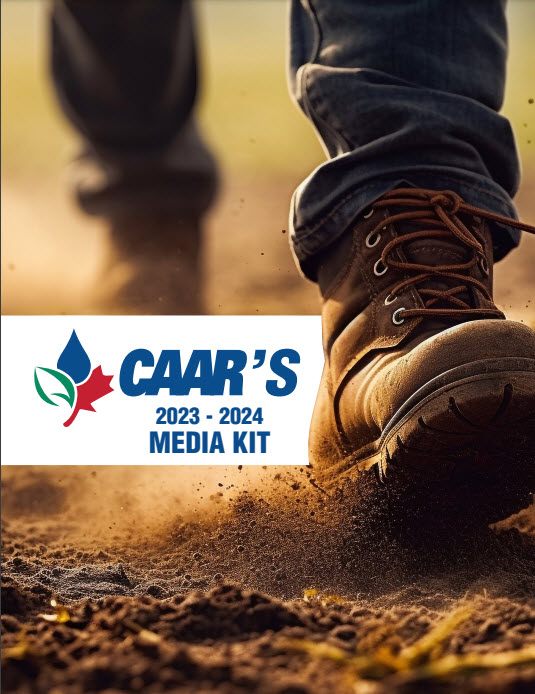At the Sustainability of Canadian Agriculture Conference 2023, hosted by University of Manitoba’s National Centre for Livestock and the Environment and Agriculture and Agri-Food Canada in March, Henry Janzen, Honorary Research Associate, Agriculture and Agri-Food Canada, Lethbridge, Alberta stated that the possibility of net-zero GHG (greenhouse gas) emissions from production agriculture as highly unlikely because of too much leakage.
By Mitch Rezansoff, Executive Director
He described the reality of the world we live in—GHGs are produced by nature, as soil, grasslands, forages, forests, and wetlands all release and sequester GHGs. Researchers evaluating GHG emissions from synthetic fertilizers describe naturally-occurring GHGs as background release. Are there opportunities to significantly reduce agriculture GHGs by operation—the answer is yes. It also demonstrates why an absolute reduction of GHGs specific to a single farm operation (synthetic fertilizer application) is not a sound goal outright.
The goal is unachievable as currently defined. AAFC (Agriculture and Agri-Food Canada), ECCC (Environment and Climate Change Canada) and universities have spent the winter engaging farmers, farm and commodity associations, the general public, eNGO’s (environmental non-government organizations, and indigenous groups to gauge input, direction and focus the direction of agriculture GHG emissions reduction and sustainability of agriculture. At the same time, significant real research results were provided supporting and not confirming the current ideology or proposed solutions. What was confirmed outright, was the need to engage farmers producing 80 percent of Canada’s commodities. One size does not fit all. Focus on farm solutions that will provide the greatest impact within the next three to five years. Medium to extra-large farms and organizations representing them need to be unapologetic about their needs and solutions. The farms described are the producers of Canada’s exports. When these operations contributed the message was clear, we do not support any initiative that reduces the profitability and viability of the operation. Provide us with real-world research and data, solutions that improve efficiencies, and profitability. The adoption will be ubiquitous, as was demonstrated with the GPS (global positioning systems) on powered equipment in the ’90s.
Another way to interpret the comment; any attempts to mandate BMPs (Best Management Practices) that reduce profitability will not be endorsed. My add to this statement; if you want to keep farm quality of life where it is today, opportunities to transition family farms to sons, daughters, and grandchildren do not burden farmers with added costs or paperwork complexity.
Recent research data confirmed what farmers already knew and practice today. Specific fertilizers with efficiency products can be broadcast on minimum and zero tillage in Western Canada operations and significantly reduce GHG emissions and nitrogen losses.
Sustainable agriculture production was and continues to be a topic following Canada’s Strengthen Climate Plan public engagement process. The definition of sustainable agriculture production is complex and more complicated than emissions reduction goals. Food processors, politics, ideology, and consumer groups now enter the conversation. Each defines and demands its version of sustainable production. European Commission Farm 2 Fork, New Green Deal, Organic Certified, and naturally produced come to mind. When evaluating modern agriculture production vs the mandated production practices, how sustainable are they long-term? The fact is sustainability can only be measured in the long term. The impact of crop rotations utilizing legumes, forages, and manures, integrating livestock grazing, minimum, and zero tillage. Agronomic and animal production sustainability are not the only measures of sustainability. Environment load, profitability, and quality of life must be equally measured. A new term added is socially sustainable agriculture production. I have no idea what that means.
What is the correct goal and solution? It must be science-based that benefits the farmer first and delivers high-quality, nutritious, and safe products to consumers at an economical price. Production output based vs absolute reduction. Whole farm sequestration and emissions. Ideology changes over time and as demonstrated in Europe today, can result in division, disruption, increased costs, and decreased food security. Canada is an exporting nation and can demonstrate to global importers our agriculture production expertise is to be followed and not dictated.
Related Articles
- April 2024 issue of CAAR Communicator now available online The April issue of CAAR Communicator "I Think therefore AI AG" should arrive in your mailbox any day now. The issue welcomes new Executive Director Myrna Grahn who began her new role on March 25, 2024. The featur...
- The world is not enough Wanting to do their part in reducing global GHG emissions, Canadian farmers still can’t catch a break from federal tax fees. But what’s going on around the world? By Andrew Joseph, Editor While there are always ...
- Clearing the air on carbon tax Andrew Joseph, Editor Sometimes, people and governments toss out new words or phrases and expect everyone to follow along. Such is the case with carbon taxes. Most of us have a peripheral understanding of the conc...
- Strikes—the cost of doing business Another strike means another disruption to the way Canada does business. A look at how legal strikes impact our country. By Andrew Joseph, Editor Canada has seen its fair share of strikes lately—from auto workers...
- Keepin’ it real Some advice on how the ag community can maintain its workforce well. By Ainsley Andres According to new labour market data from the Canadian Agricultural Human Resource Council (CAHRC), agriculture in Canada, inc...
 How to resolve AdBlock issue?
How to resolve AdBlock issue? 


Join the discussion...
You must be logged in as a CAAR member to comment.
Report
My comments